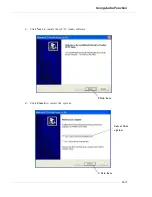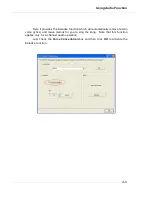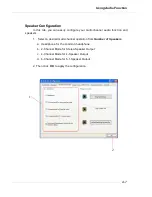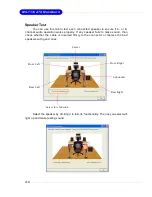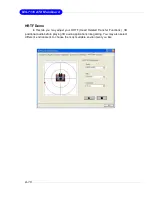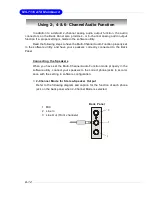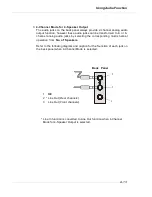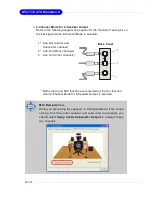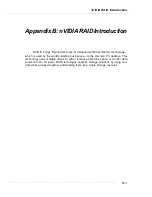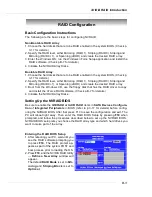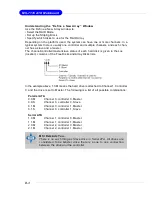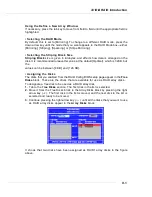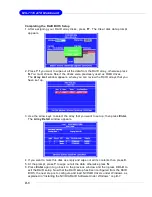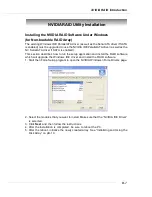
B-3
nVIDIA RAID Introduction
Basic Configuration Instructions
The following are the basic steps for configuring NVRAID:
Non-Bootable RAID Array
1. Choose the hard disks that are to be RAID enabled in the system BIOS. (Check p.
3-17 for details.)
2. Specify the RAID level, either Mirroring (RAID 1), Striping (RAID 0), Striping and
Mirroring (RAID 0+1), or Spanning (JBOD) and create the desired RAID array.
3. Enter the W indows OS, run the W indows nForce Setup application and install the
RAID software. (Check p.B-7 for details.)
4. Initialize the NVRAID Array Disks.
Bootable RAID Array
1. Choose the hard disks that are to be RAID enabled in the system BIOS. (Check p.
3-17 for details.)
2. Specify the RAID level, either Mirroring (RAID 1), Striping (RAID 0), Striping and
Mirroring (RAID 0+1), or Spanning (JBOD) and create the desired RAID array.
3. Boot from the W indows CD, use the floppy disk that has the RAID driver to copy
and install the nForce RAID software. (Check p.B-7 for details.)
4. Initialize the NVRAID Array Disks.
Setting Up the NVRAID BIOS
Be sure to enable the
IDE RAID or SATA RAID
items in
SATA Devices Configura-
tion
of
Integrated Peripherals
in BIOS (refer to p.3-17 for details) before config-
uring the NVRAID BIOS. After that press F10 to save the configuration and exit. The
PC will reboot right away. Then enter the RAID BIOS Setup by pressing
F10
when
prompted, and follow the procedures described below to set up the NVRAID BIOS.
NVRAID BIOS setup lets you choose the RAID array type and which hard drives you
want to make part of the array.
Entering the RAID BIOS Setup
1. After rebooting your PC, wait until you
see the RAID software prompting you
to press
F10
. The RAID prompt ap-
pears as part of the system POST and
boot process prior to loading the OS.
2. Press
F10
, and the NVIDIA RAID Utility
---
Define a New Array
window will
appear.
The default
RAID Mode
is set to
Mir-
roring
and
Striping Block
is set to
O pti mal
.
RAID Configuration

